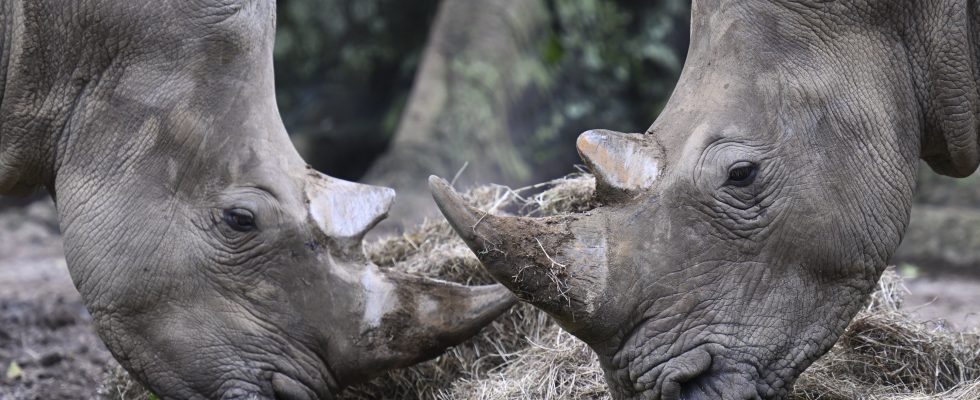(BFM Bourse) – These two animals refer to strong threats to the various financial markets. However, they should not be confused.
Pandemic, mini-banking crisis, tensions on supply chains, Brexit, war in Ukraine, rising interest rates, soaring inflation… The last few years or even the last few months have hardly been easy for the investors and the markets. A whole number of elements, sometimes unpredictable, sometimes haunting, swept the markets causing in particular a fall in shares of nearly 9.5%, last year on the CAC 40.
Illustrative terms exist to qualify these risks which hover without investors necessarily perceiving them to their true extent: we speak of “black swans” and “gray rhinoceros”. Two animals which in fact do not have much in common, and for good reason, they do not refer to the same types of threat.
The black swan remains a fairly familiar concept to investors, although relatively recent. This term owes its fame to Nassim Nicholas Taleb, in 2007. This former Lebanese-American stock broker popularized this concept in his book “The Black Swan: The Power of the Unpredictable” which refers to the fact that history is not predictable but determined by extraordinary and unforeseen events.
Black swans not easy to classify
Nassim Nicholas Taleb recalls that the bird of bad omen had already been used in the 19th century by the English philosopher John Stuart Mill. The latter explained that no matter how many white swans we observe or the fact that man has never seen swans of a color other than white, it only takes one black swan for the axiom “all swans are white” is questioned. What happened when Dutch explorers discovered at the end of the 17th century on the Australian coast a black species of swan.
To return to the stock market, the concept of black swan “designates an extreme event whose cost is very high but the probability very low”, notes Atlantic Financial Group in a note published at the beginning of the week.
The American brokerage firm TD Ameritrade, refers to Nassim Nicholas Taleb’s book by noting “three components”. The black swan “falls outside the scope of usual expectations because nothing in the past indicates that it is possible, it has an extreme impact and, despite its aberrant character, people are inclined to find explanations for the event after shot to make it look predictable,” he says.
These classifications are still subject to debate, but the collapse of the housing market and the great financial crisis of 2008 may constitute a “black swan”, as well as the attacks of September 11, 2001, which had resulted in a fall in the Dow Jones by about 7% over twenty days.
We can also think of the war in Ukraine (says CaixaBank) or even the health crisis that arose in early 2020. But in the latter case, Nassim Nicholas Taleb judged, on Radio France, that this event did not constitute a black swan. . The black swan “depends on the person who observes”, he explained on the radio then. “If we know the problems well, some events are not black swans, but if we don’t understand things”, they become, he continued.
A gray rhinoceros dated … 2016
The “grey rhinoceros” is an even newer term. Its kinship is to the credit of the author and economic analyst Michele Wucker who conceptualized it in her book “The gray rhino: How to recognize and act on the obvious dangers we ignore” (“The Gray Rhino: How to Recognize Obvious Dangers We’re Unaware of and Then Act On”).
This animal is between the famous “elephant in the room”, an English expression which evokes a totally obvious danger, and the “black swan” which seems improbable. The threat does not have a low probability but is neglected.
“The gray rhino does not come as a surprise. He rushes towards investors after a series of warnings whose consequences have been too little harmful to really worry them. On the contrary, they have ended up reassuring him about his ability to face the real danger to which they are exposed”, explains Atlantic Financial Group.
“A gray rhino can be defined as a well-known, slow-moving risk that can cause or amplify financial or other crises, if ignored long enough,” said Bank Deputy Governor Marja Nykänen in a speech. from Finland. “For example, high household debt and climate change can become gray rhinos if we don’t act decisively to slow them down,” she explained in this May 2022 speech.
In its note published at the beginning of the week, Atlantic Financial Group estimates that the indebtedness of the States but also of the households and the companies is similar to a risk of gray rhinoceros. “Over the past three years, with the rise in debt but especially with the rise in interest rates, the risk of insolvency has increased. Yet the possibility of a debt crisis is so old and recurrent that investors got used to it,” they wrote.
“The most important gray rhinos are inflation and shortages, high valuations and interest rate swings. These are big, hairy, polycausal issues, not amenable to painless resolutions,” wrote for its part at the end of 2021, the investment company, CION Investments.
Other, example, mentioned by The echoes in an editorial, the Chinese real estate crisis caused by the difficulties of developer Evergrande.
Julien Marion – ©2023 BFM Bourse
